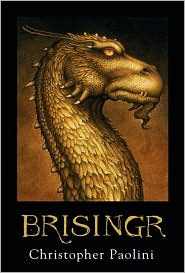What I’m referring to in the name of this post is not actually this post but another I just found on eHarlequin. Author Michelle Styles writes about POV in a really great way, I think, in her blog post Switching Point of View v Head Hopping.
I went in search of a good article about this because I needed a kind of kick in the pants that says, “Go on, try it. It could work. It’s ok to break the rules.” Michelle gave me just the right way of thinking about it. Although switching point of view isn’t, shall we say, encouraged, especially with middle-grade books, if the writing isn’t confusing (i.e. the reader always knows whose head he’s in), then switching POV is fine as long as it works for the story. Besides, as Michelle points out, Terry Prachett does it brilliantly, and he’s one of my favorite authors.
I love this last part of Michelle’s post:
There is NO hard and fast rule. The only rule is the story. If the story flows and the tension is high, you can shift as the story dictates. If the tension is low, not even slavish devotion to one point of view will save it.
Techniques are there to be mastered, rather than followed blindly.
(But the whole post is great, so click here and read it.)
Once again, story is king!
I wrote about switching POV a couple days ago and got some fabulous, encouraging comments about it. What I really need to do next is start typing and try it, but I was kinda busy today. It was always on my mind, though, and I decided to do a little research and flip through the books on my shelves and remind myself of how they handled their POVs.
I just finished the fourth book in Rick Riordan’s Percy Jackson series (fantastic, if you haven’t tried them), but they’re all first person, and I’m not feeling that style for me as a writer. I’m currently reading the second book in Suzanne Collins’ Underland Chronicles (also fantastic), and that’s solely in the third-person protagonist’s POV, like my first book. Both of these styles work really well to bring the reader totally into the character’s world.
A book I read a while ago, Peter Pan in Scarlett, is in omniscient narrative, and although the book is very entertaining and has some delightful throwbacks to the original classic, I must admit it was a bit of a struggle for me in the first half. I never really felt like I was in the head of Peter, Wendy or any of the characters. I really was just kind of floating above and didn’t feel as though I was in the story, part of the story.
In the Eragon books, Christopher Paolini deftly switches pov every chapter or so (especially in the third book), but he does something interesting: His characters are given a sort of heirarchy, with Eragon at the top. Whenever Eragon is in a scene, it’s in his POV and we see the other characters through his eyes. But when there’s a scene with one of the lesser characters when Eragon isn’t around, Paolini chooses which character has the most to gain (storywise) from the scene and that’s whose POV it’s told in. Again, it works very well. There’s no switching within scenes, and each scene begins with some action, thought, something from the character whose POV we’re seeing through, so no confusion.
Then I spied the last Harry Potter book and something told me to go back and read the opening of the first book, Sorcerer’s Stone. Wow! I hadn’t remembered (and when I read this book I wasn’t dissecting it like I am now), but J.K. Rowling begins the initial scene in Mr. Dursley’s head, then when he goes to sleep, the POV switches to McGonagall as the cat, then to Dumbledore, and finally baby Harry. There are some narratory sentences (”How very wrong he was”), but it doesn’t read like omniscient narrative. It reads like third person switching from head to head, but it’s written so well that as a reader, you’re never confused about who you’re following, who’s head you’re in. And ultimately, it tells the story very well, which is exactly what Michelle was talking about in her excellent post on POV.
Ok, now I know what you’re thinking: Stop analyzing it and go write it! And you’re right. I will. But first, I must get some sleep. I’ll set the alarm for early, even on a Saturday — shudder.
How are you guys coming along?
Write On!
P.S. No word count from me today because all I managed to have time for was 11 words, but lots of research. I’ll post a word count tomorrow.


















I was going to suggest Bartimaeus Trilogy by Jonathan Stroud, but I think your Harry Potter example is really much better–I knew she had done that, but I never really took the time to think about HOW she had done that.
Thanks, Beth. I haven’t read the Bartimaeus Trilogy. They’re going on my to read list.
Thanks for the article link. I definitely think you should go for it!
Thanks, Karen.
[...] As I had the day off, I figured I’d let myself sleep in instead of setting my alarm early and writing like I usually do. That was my big mistake. By the time I had gotten up, eaten breakfast, and gone to the gym, it was 11. The rest of the day went just as fast, and needless to say, I didn’t get any writing done. I was thinking about my writing all the time, though, and I did manage to do some research about point of view, which I wrote about that evening. [...]